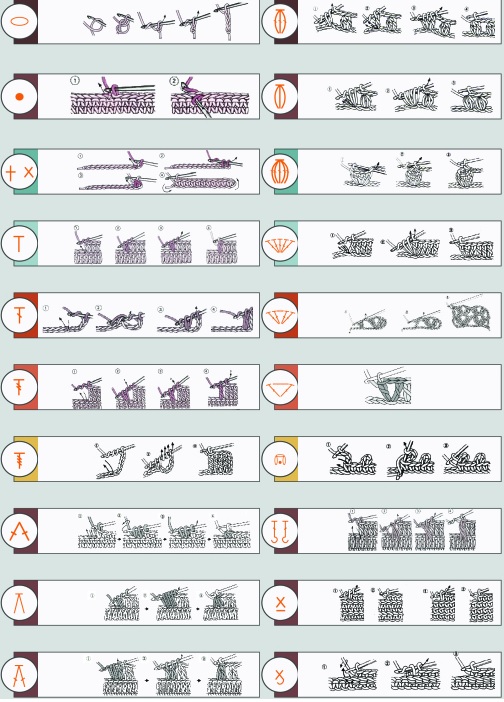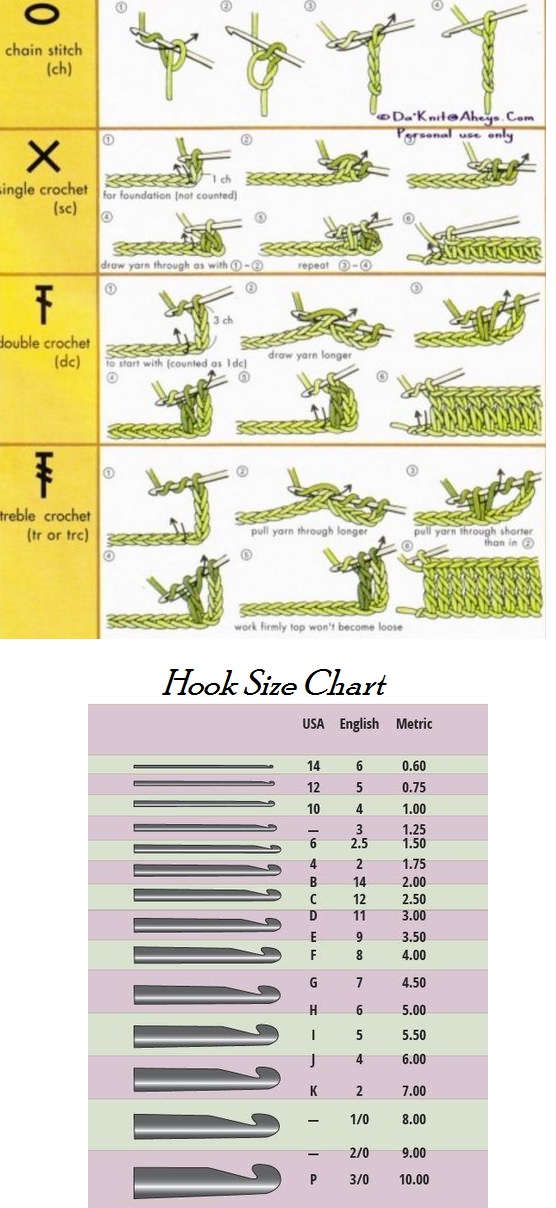Crochet Stitches And Sizes Guide

Crochet can seem like a mysterious art with its wide array of stitches and sizing options.
Also: Fantastic Christmas Candle Made With Lace
This Crochet Stitches and Sizes Guide will break down the essentials, covering different types of crochet stitches, when to use them, and how to determine the right size for your project.
Whether you’re a beginner or a seasoned crocheter, understanding stitch types and sizes will help elevate your crochet work, giving you the confidence to tackle any project.
Crochet Stitches And Sizes Guide
Look what we have prepared for you. It’s guide for everyone, if you are beginner or experienced this post and schedules will be useful for you. Here you can find Stitches and sizes.
We tried to find more information for you and we think there is everything that you will need in future at time of crocheting. Knowledge is everything even in hobbies and crafts.
With your knowledge you can make your work more enjoyable and with result you will be always proud.




We hope this post will help you in everything and it will become your table book.
Types of Basic Crochet Stitches
Each crochet project begins with the foundation stitches. Here’s a breakdown of the most commonly used stitches, ranging from basic to advanced.
1. Chain Stitch (ch)
The chain stitch is the most basic stitch, used to create the foundation of almost all crochet projects.
- Purpose: Forms the foundation row and creates spaces between other stitches.
- Technique: Yarn over, pull through the loop.
- Usage: Foundation chains, creating spaces, and shaping edges.
Quick Tip: Keep your chains loose to avoid a tight foundation that can distort the shape of your project.
2. Single Crochet (sc)
Single crochet is a short, dense stitch that’s great for beginners and provides a sturdy fabric.
- Purpose: Creates a tight, dense fabric that’s ideal for items like bags, blankets, and amigurumi.
- Technique: Insert hook, yarn over, pull through loop, yarn over again, pull through both loops.
- Usage: Amigurumi, dishcloths, scarves, and structure-intensive pieces.
3. Half Double Crochet (hdc)
Half double crochet is slightly taller than single crochet but shorter than double crochet, offering a nice balance.
- Purpose: Adds height without sacrificing density, creating a flexible fabric.
- Technique: Yarn over, insert hook, yarn over, pull through loop, yarn over, pull through all three loops.
- Usage: Blankets, garments, and shawls for a medium-weight fabric.
4. Double Crochet (dc)
Double crochet is a versatile stitch that’s easy to work up quickly, resulting in a looser fabric.
- Purpose: Provides good height, creating a soft, airy fabric that’s great for drapey items.
- Technique: Yarn over, insert hook, yarn over, pull through loop, yarn over, pull through two loops twice.
- Usage: Shawls, scarves, and any project requiring length and flexibility.
5. Treble Crochet (tr)
Treble crochet is one of the tallest stitches, providing a very open, lacy effect.
- Purpose: Adds height and openness, excellent for lace patterns.
- Technique: Yarn over twice, insert hook, yarn over, pull through loop, yarn over, pull through two loops three times.
- Usage: Shawls, lacy scarves, and decorative edges.
Did You Know?: Combining different heights of stitches in a pattern can add texture and dimension to your project.
6. Slip Stitch (sl st)
Although not usually a “main stitch,” slip stitch is invaluable for joining pieces and finishing edges.
- Purpose: Used for joining, finishing, and moving across stitches without adding height.
- Technique: Insert hook, yarn over, pull through both loops at once.
- Usage: Joining rounds, creating seamless edges, and adding decorative trim.
Understanding Crochet Gauge and Size
Gauge refers to the number of stitches and rows per inch and is crucial for achieving accurate sizes in crochet.
How to Measure Gauge
To measure gauge, crochet a 4x4 inch swatch using the same yarn and hook specified in your pattern.
- Count Stitches Across: Count the stitches across the swatch and divide by 4 for the stitches per inch.
- Count Rows: Count the rows up the swatch and divide by 4 for rows per inch.
Gauge Tip: Always block your swatch before measuring, especially if you’re making a wearable item that may stretch.
Adjusting Gauge for Size
If your gauge doesn’t match the pattern:
- Too Many Stitches Per Inch: Try a larger hook to achieve the correct gauge.
- Too Few Stitches Per Inch: Switch to a smaller hook.
Did You Know?: Yarn type and crochet tension can impact gauge, so it’s essential to check your gauge even if you’re using the suggested hook size.
Crochet Hook Sizes and Their Impact
Different hook sizes affect the structure, texture, and size of your finished project. Here’s a quick reference for common crochet hook sizes and their uses:
| Hook Size | Yarn Weight | Best For |
|---|---|---|
| 2.25-3.5mm | Lace, Fingering | Doilies, lacework, delicate pieces |
| 3.5-4.5mm | Sport, DK | Lightweight scarves, summer garments |
| 5-6mm | Worsted, Aran | Blankets, sweaters, hats |
| 6.5-8mm | Bulky, Super Bulky | Chunky blankets, warm wearables |
| 9mm+ | Jumbo | Oversized scarves, quick projects |
Sizing Crochet Projects: Tips for Common Items
1. Hats
- Measure Head Circumference: Subtract about 1 inch for a snug fit.
- Crown Diameter Formula: Circumference ÷ π (3.14) gives you the diameter for the crown.
Hat Sizing Tip: Hats stretch, so it’s better to size down slightly for a secure fit.
2. Blankets
- Lapghan: 36 x 48 inches, ideal for a cozy lap blanket.
- Afghan: 48 x 72 inches, suitable for snuggling on the couch.
- Baby Blanket: 30 x 36 inches, perfect for infants.
Blanket Tip: Add extra stitches for border and edging, as these can slightly reduce the overall size.
3. Garments (Tops, Sweaters)
- Bust Measurement: Measure around the fullest part of the chest.
- Ease: Add ease (extra inches) depending on how loose or fitted you want the garment.
Garment Tip: Check gauge often, as different yarns and stitch patterns can vary the fit drastically.
4. Scarves and Shawls
- Scarves: Aim for 6-8 inches in width and 60-70 inches in length.
- Shawls: Triangle shawls are usually 60 inches across the top edge and 30 inches in height.
CHECK MORE CROCHET PATTERNS